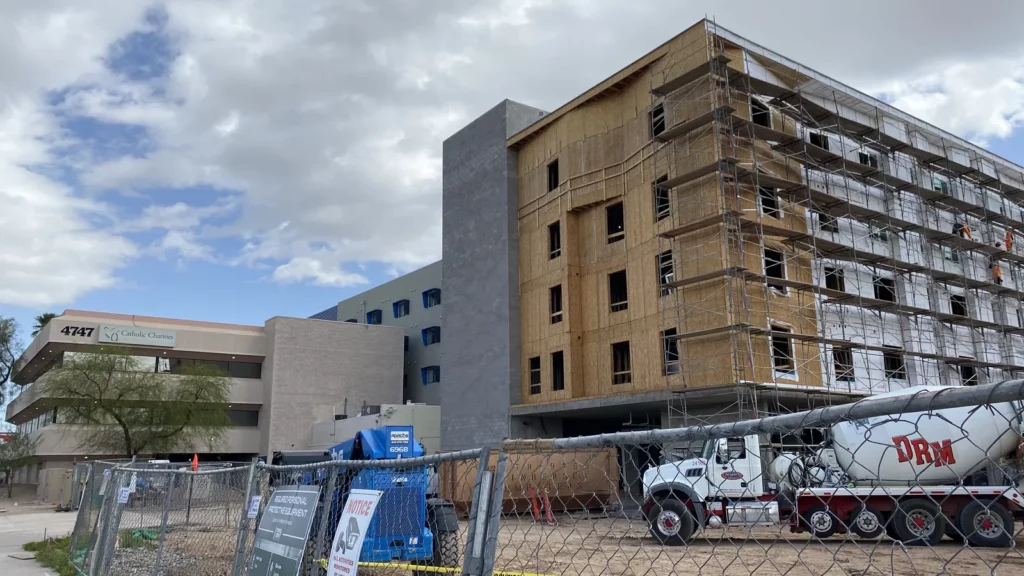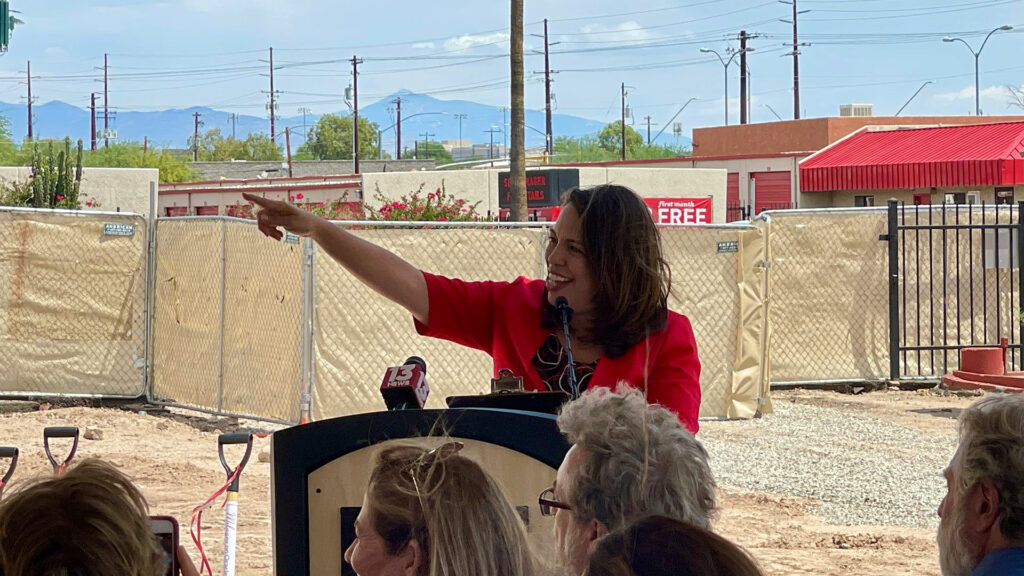Council approves small project after big backlash

BY Scott Shumaker, Tribune Staff Writer
Comedian Larry David joked that good compromise leaves all parties dissatisfied.
By that definition, a contentious 36-unit townhome-style apartment project on Southern Avenue and 32nd Street that passed Mesa City Council July 11 might qualify as a good compromise.
The recently approved Countryside Townhomes is a 2.4-acre infill project at an intersection in a neighborhood dominated by single-family homes.
Though relatively small with five two-story buildings, the proposed complex generated a mighty response from the Dana Park community.
After five months of wrangling between neighbors and the developer, including half-a-dozen meetings attended by hundreds of residents, the project owner made enough changes on parking, density and other issues to win a half-hearted assent from the largest neighborhood group fighting the project.
That cleared the way for Council’s unanimous vote to approve after two months of postponed voting.
But as Monty Hogle, the leader of the largest group, said at the meeting, neither side was enthusiastic with the result.
“Our committee is not 100% happy with the final decisions that have been made, nor our neighbors,” Hogle told the council. “I’m confident the developers and the owners have concerns about what they have agreed to … but we have reached a mutual agreement and are ready to move forward.”
After the vote, the developer let out a visible sigh.
Councilman David Luna described the process as “one of the most difficult” zoning cases he has worked on, and he was part of tough negotiations for a controversial 300-unit complex on Longbow Parkway earlier this year.
Two lawmakers introduced a bill in the last legislative session that would have eliminated the zoning processes for many new housing projects in Arizona.
The theory was that by reducing the extent of battles over housing, the state could increase its inventory of housing more efficiently.
The text of the bill changing zoning rules was struck out and replaced with language creating a new “Housing Supply Study Committee,” which eventually passed.
Depending on the point of view, the Countryside Townhomes battle could be held up as the reason zoning hearings are important – or as a cautionary tale of how zoning cases interfere with new housing.
On the dais before the vote, councilmembers viewed the “hundreds of hours” of staff and resident time that went into the case in a positive light.
“I commend the neighborhood, the developers, the developers’ attorney, and staff for really working to try to make this something that we can all be OK with,” said Council member Julie Spilsbury, who represents the district where the project is located.
‘Lies,’ and ‘misrepresentations’
Countryside Townhomes needed a zoning change from single to multi-family residence to proceed, and its zoning case elicited a reaction as big as a project 10 times as large.
Part of the intensity came from concerns related to overflow parking, traffic, density and other common issues surrounding apartments.
The rest of the fury can be traced to the developer’s missteps during the application process, which whipped up the neighborhood’s anger and created the perception that the process was an “inside setup job,” as Hogle put it.
Months of dialogue with those involved had apparently not softened Hogle’s view of “the lies, deception, the misrepresentations, and the mistakes” in the application process for Countryside.
The public portion of the zoning case got off to a bad start at the January Planning and Zoning Board hearing.
Mike Hudson, one of the architects for the project, told the board there were few comments or concerns identified during the citizen engagement part of the application.
Countrywide held one meeting via video conference in July, with eight attendees.
Neighbors in the area actually had a lot of questions and complaints.
Some of them showed up to the meeting to learn more and express their opposition, including a resident who said he had never received notification of the project.
City staff who later looked into the issue determined the applicant had sent project notifications to neighbors within a 500-foot radius, the minimum required, but falsely stated in the participation report that residents within a 1,000-foot radius –the recommended distance – were notified.
The applicant said it was an honest administrative error and worked to correct the issue. The planning process was put on hold while more notifications were sent and several community meetings were held to give neighbors the chance to weigh in.
It didn’t soothe the residents’ suspicions to learn that one of the architects on the project, Tim Boyle, is a Planning and Zoning Board member, even though he recused himself from the Countryside Townhomes hearing.
Angry about the error in notification and the sense that they weren’t being heard, hundreds of residents came to the neighborhood meetings after the planning and zoning hearing, and groups formed to oppose the project.
One group even organized a petition drive and obtained the required number of signatures to file a legal protest against the project, which required it to pass with a supermajority vote by council.
Spilsbury acknowledged the issues with the process before the vote on Countryside Townhomes.
“I agree with you that things were done wrong in this zoning case,” Spilsbury told Hogle. “After watching the planning and zoning meeting, I was extremely upset. I did not like the way everyone was treated … and I had a conversation with our city manager, our mayor, our planning staff and director to express my concerns so that this never happens moving forward.”
Changes to Countryside
After the planning and zoning meeting, the developer met with the resident group to negotiate having the legal protest withdrawn.
The developer agreed to give the buildings a more traditional versus modern look, increase the street setbacks, remove four units from the plan – a 10% reduction, and add 32 parking spaces above the required 76.
The developer created space for all the additional parking by removing a proposed dog park.
The change in parking gives Countryside Townhomes three parking spaces per unit.
To put this amount of parking in perspective, a multifamily housing development at U.S. 60 and Country Club Road passed during the same council meeting with 1.29 parking spaces per unit.
The number of parking spaces addresses neighbors’ concern that vehicles owned by renters would be parked along 32nd Street and in the church parking lot to the south.
Concern with overflow parking also made it into an exacting good neighbor policy the developer agreed to have written into the development’s Covenants, Conditions and Restrictions.
As part of its understanding with the developer, the group said it would withdraw its legal protest, but it had not done so before the July council meeting, which was the last vote before its summer recess.
One neighbor who continued to oppose the project submitted comments to be read into the record.
The idea was to have the residents’ group withdraw the legal protest before Council voted on it, but with no more time to postpone the vote without adding another month’s delay to the project, Council went forward with a vote.
“All we ask is that you vote for what you feel is the best for our awesome neighborhood and the city of Mesa,” Hogle told the council just before it voted 7-0 to approve the compromise project.






